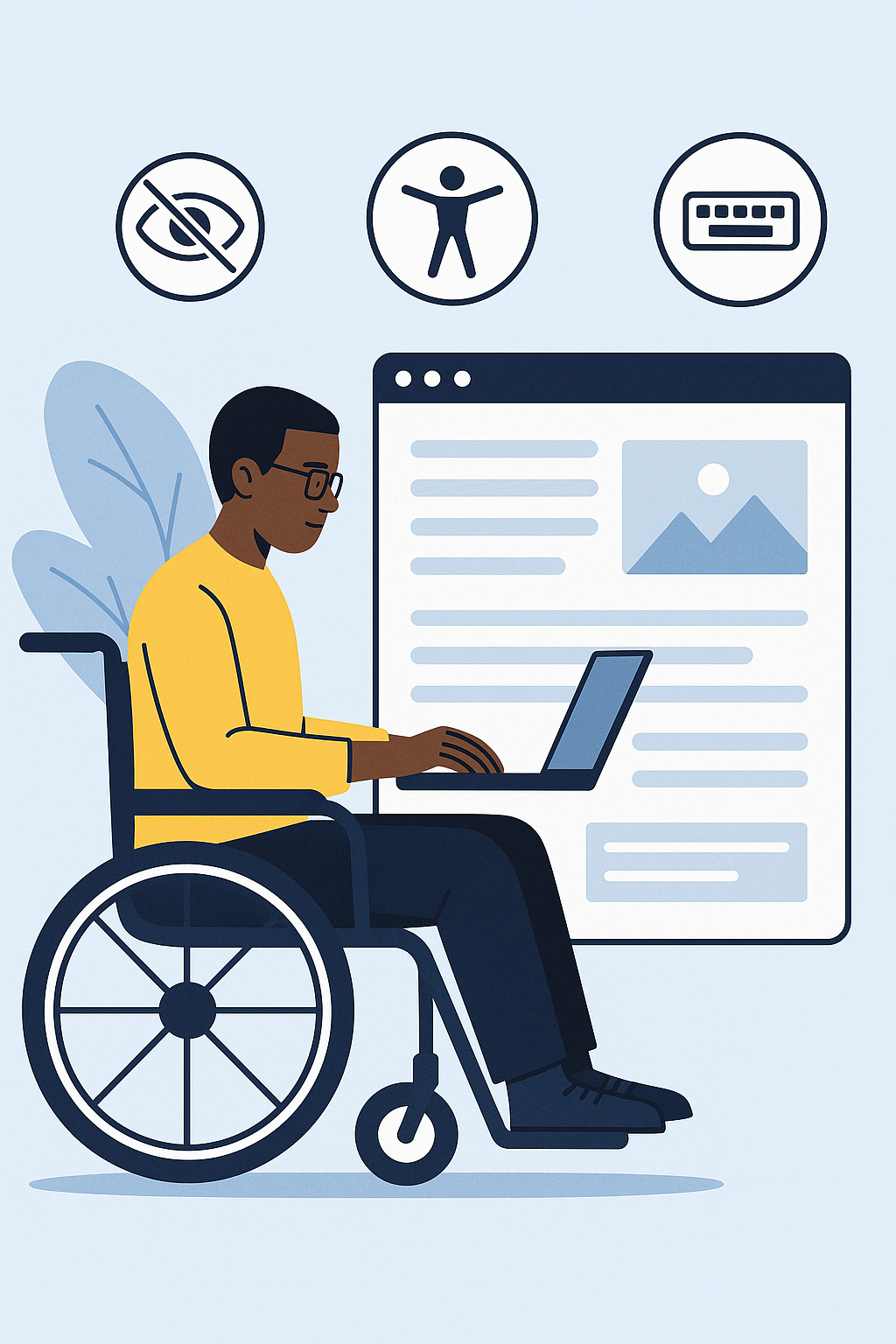Website Accessibility: What It Is and Why You Can’t Ignore It
If you own a website, accessibility is no longer something you can put off. ADA-related demand letters are on the rise, and settlements often run from thousands to tens of thousands of dollars. The Department of Justice has also made it clear that websites and mobile apps are covered by ADA protections.
But this isn’t just about compliance. Accessibility determines whether millions of people can actually use your site, whether your brand feels inclusive, and whether customers can complete basic tasks like reading content or making a purchase.
The digital reality in 2025
The direction is clear: digital experiences are expected to meet accessibility standards. Many businesses are already treating this as a core requirement, and the ones that don’t risk falling behind.
For people who rely on screen readers, keyboard navigation, or voice dictation, inaccessible websites can be roadblocks from the very first click. Drop-down menus that trap focus, form fields that can’t be reached with a keyboard, or images without alt text all create barriers. These aren’t niche issues—they’re daily frustrations for millions.
Accessibility is also good business. When visitors feel welcome and can navigate with ease, they come back. That loyalty is powerful.
A simple next step
Accessibility is both the right thing to do and a smart business decision. For every site I build, I recommend accessiBe because it not only reduces legal risk but also welcomes more people, builds trust, and shows that you care about each visitor. It offers:
Automatic, ongoing accessibility: accessiBe uses AI to bring your site in line with WCAG 2.1 Level AA standards and scans daily to remediate new issues.
Easy setup: Most sites see improvements within 48 hours, making it one of the fastest ways to address accessibility gaps.
Built-in compliance tools: You’ll receive an accessibility statement and monthly audit to demonstrate your ongoing commitment.
User-friendly: Visitors can adjust their browsing experience with a customizable interface, choose from 33 languages, and even use a built-in dictionary.
Brand-friendly: You can match the widget’s appearance to your site’s style, so accessibility feels integrated, not tacked on.
SEO benefits. With Google Analytics integration, you can track usage and potentially improve your search rankings.
Check it out in use on my own website by clicking the accessibility logo in the lower, left-hand corner!

